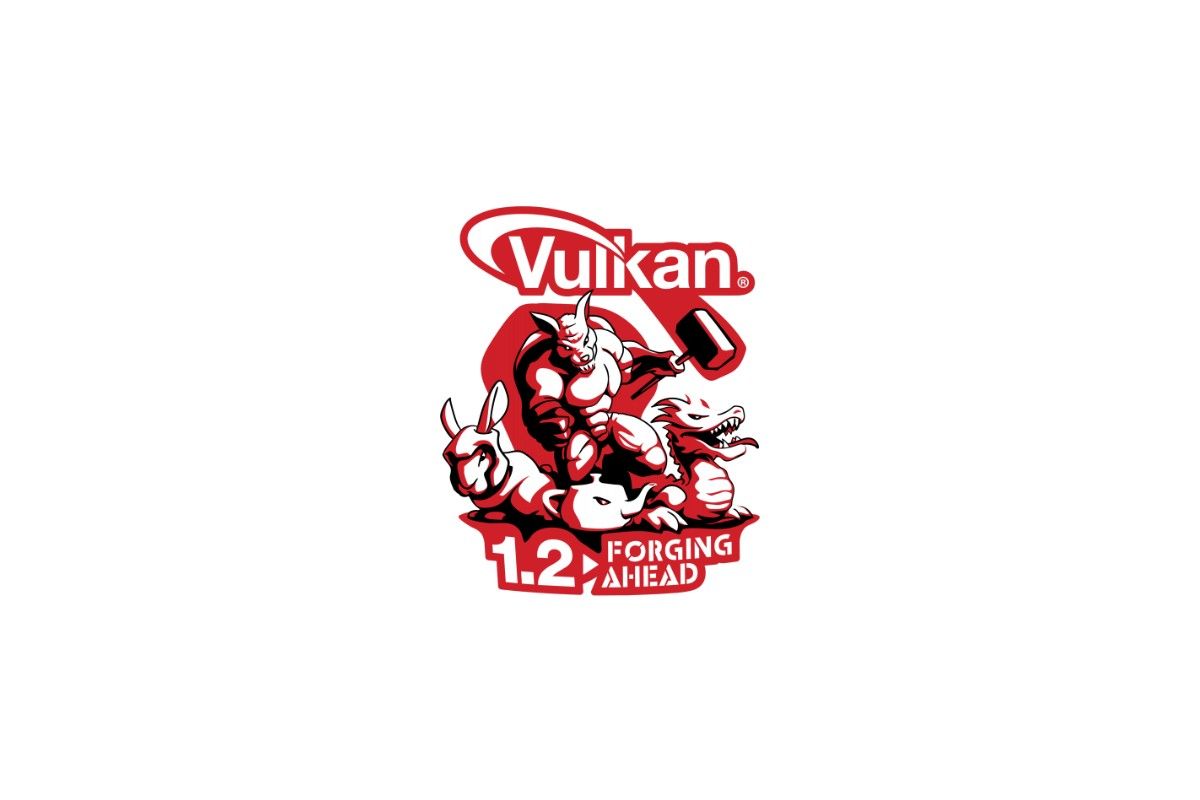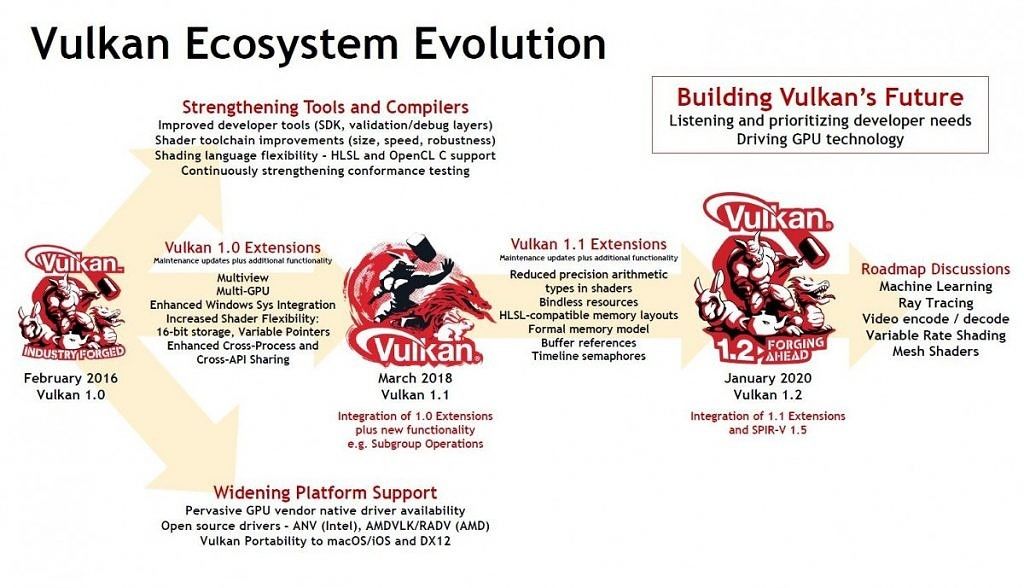It's been roughly four years since the announcement of the first version of the Vulkan Graphics API, in February 2016, by the Khronos Group. To keep things simple, it was a new graphics API - meant as a successor of sorts to OpenGL - that's able to utilize multiple-core processors efficiently, which is huge considering how mainstream octa-core processors have become in recent times. Through the years, it has started being utilized in many games, and most major operating systems we use daily, like Android and Windows 10, support the API. Version 1.1 was released with key improvements back in March 2018, and now, Khronos has officially announced version 1.2.
The biggest improvement in version 1.2 is that it is rolling a number of previously released extensions - 23, to be precise - into the core Vulkan API. This will improve make development easier and reduce the uncertainty of certain extensions not being available on certain platforms. Another improvement is Timeline Semaphore, touted as a more efficient way to handle multithreaded operations. It unifies the previous VkFence and VkSemaphore solutions for a unified 64-bit solution that covers synchronization across device queues and hosts while simultaneously doing away with painful limitations of the previous solution. Other improvements include a built-in formal memory model to define the semantics of memory operations/synchronizations across different threads, descriptor indexing support, deeper support for shaders written in HLSL, and more.
Vulkan 1.2 will not require any new hardware, meaning that all current GPUs will be able to support 1.2. Additionally, several GPU vendors such as AMD, NVIDIA, and Intel already have proper Vulkan 1.2 implementations passing Khronos' conformance tests. Updated drivers are already downloadable or will become downloadable soon, and you should expect Vulkan 1.2 to be supported in a wide range of compilers, debuggers, and developer tools by the end of the month. If you're a developer and you're interested in reading more about Vulkan 1.2 as well as checking out the official documentation, you can check out the Vulkan Resource Page here.


